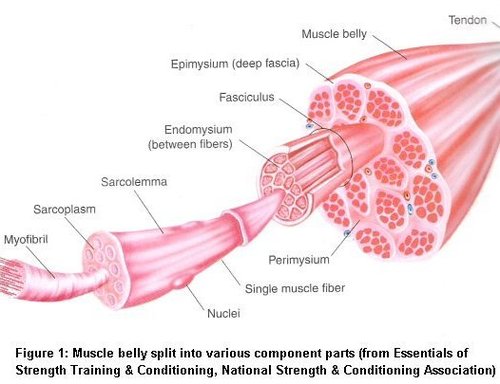Justin is understandably miffed by all of the talk and misinformation spouted by fitness experts who falsely accuse slow training as useless for athletics. These folks contend that by training slowly with weights you will teach your muscles to move slowly and become slow.
I find this very funny for several reasons. But the one that cracks me up the most is its converse - if training slow makes you slow does training fast make you only fast? Does this mean that when you engage in an athletic endeavor that requires a slow and steady effort all you will be able to do is flail and fling your limbs about?
This would be very funny in the decent into an iron cross on the still rings (Doink, snap!), in a bowling match (whip, flingggg!) or in mountain climbing ("grab, grab, grab, grab, ahhhhhhh....")
Here is what the fast advocates mistake (and bear in mind that they criticize slow rep training without ever having tried it for any lengthy period of time and without EVER experiencing the resulting fictitious sloth like movements caused by such) - they mistake fast twitch fiber and slow twitch fiber characteristics.
Muscles fibers are a mixed bag of force producing engines.
We have all sorts of fibers but they are mostly characterized by 1. Slow twitch 2. Medium twitch 3. Fast twitch. There are all sorts of sub-characteristics but for now we'll stick to these.
OK here is the mistake - these terms fast, slow and medium refer to the fibers fatigue characteristics NOT to their ability to produce force.
IOW if a person had all red oxygen rich slow twitch fibers in her elbow flexors (biceps) she could still bend her elbow rapidly and she could do so for long periods of time. However, her ability to produce a muscular looking arm would be negligible. Her ultimate strength would also be limited as it is the white, non-oxidative, fast twitch fibers which are most responsible for strength.
And stronger muscles can make a limb move faster than it did before all other factors being equal.
Someone who has predominately fast twitch fibers will be able to move fast too and because these are the fibers most responsible for strength they will be the people who usually excel in the sports which require great speed or quickness. However, these rare folks will lack endurance comparatively. And when these folks strength train they become VERY muscular.
These fibers are recruited in an orderly fashion, slow to fast. This is an accepted tenant of exercise physiology. So when you weight train, the speed you lift has nothing to do with the fibers recruited - you will always invoke the slow twitch first, medium second and fast twitch dead last hence the importance to perform a set to deep fatigue.
Performing your reps slowly using a weight load that will render deep fatigue in ~30-90 seconds will call ALL of the fibers into play. Over time you will become stronger and stronger means faster IF you practice the sport you wish to be better at at the same time.
Training quickly with weights will also, if taken to fatigue, call upon all the fibers and make you stronger.
But training with weights quickly is a potentially dangerous game and there appears to be some physiological issues with this type of training that brings about lesser results.
Dr. John Atha, who taught at the University of Technology, Loughborough, Leicestershire, England in the department of Human Sciences wrote a paper called Strengthening Muscle which was published in Exercise and Sports Science Vol. 9, 1981. He scoured over all of the research to date on strength training techniques and had this to say on speed training:
"The balance of evidence, therefore, seems to weigh against fast-speed training as a superior method of loading.
"Second, the loading in fast movements is not a function of speed, but the effort to overcome inertia and accelerate the load. Once the required speed has been achieved, no further force is invoked. Indeed the accelerating force must soon give way to a counter force in order to decelerate and bring the fast moving load to rest. Thus the period of acceleration and hence the period of elevated loading can last for only the first part of the movement."
"Hay, Andrews and Vaughan (1980) plotted the resultant torque for the elbow for three subjects who exercised with arm curls at a slow, moderate and fast speeds and this plot showed this pattern quite clearly revealing how the torque produced by the fastest movement changed steadily from the highest initially to the lowest finally, with this changeover occurring about halfway through the movement. As fast movements are over quickly anyway, the period of elevated load intensity and hence the purportedly enhanced training stimulus must be regarded as a transient. The stimulus thus lasts too brief a period to elicit the desired strengthening response unless the load is made so heavy that a fast lift is impossible."
"In summary, rapidly accelerating a given load to achieve a fast movement increases the effective loading on a muscle but only for the brief period of acceleration. Thereafter, the loading is greatly reduced."
Feel free to comment!












